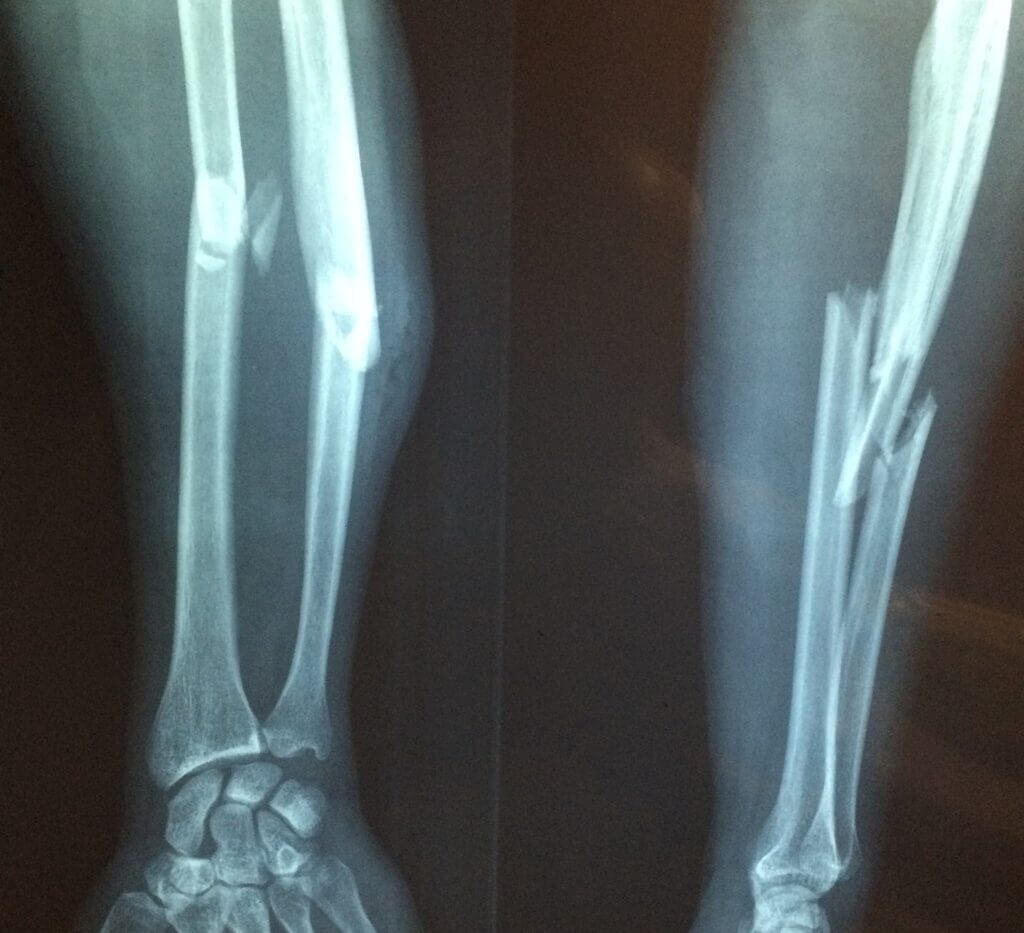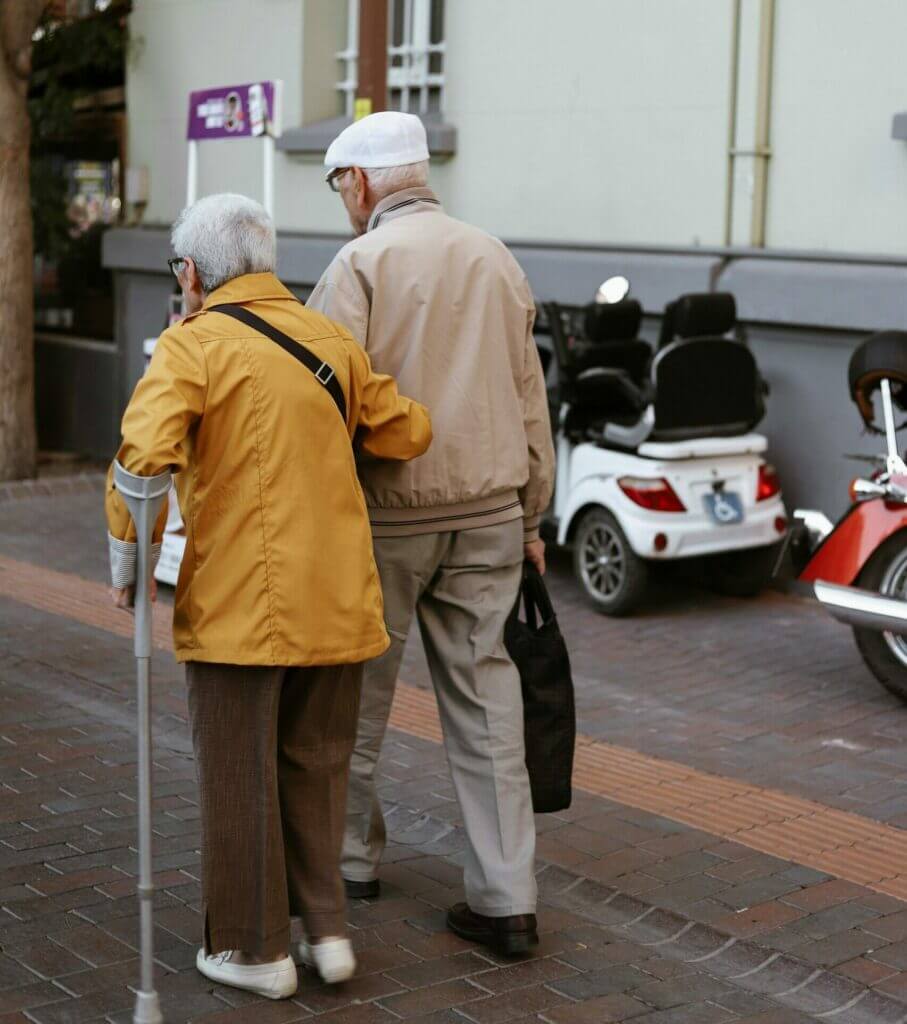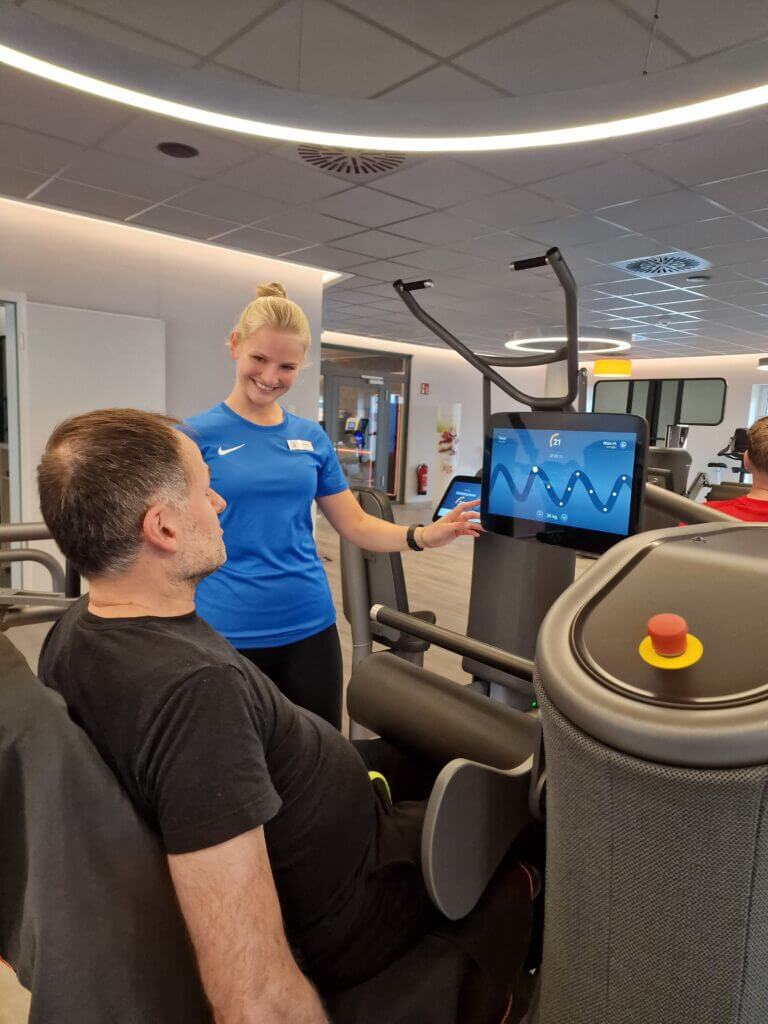Osteoporose
Definition
Osteoporose (Knochenschwund) ist eine Erkrankung, bei der sich die Knochendichte zunehmend verringert. Dies hat zufolge, dass Knochen anfälliger für Knochenbrüche sind. Oftmals bleibt die Krankheit unbemerkt, bis es zum ersten Bruch kommt.
Ursachen und natürliche Risikofaktoren
Osteoporose wird mithilfe einer Knochendichtemessung diagnostiziert und betrifft deutlich mehr Frauen als Männer. Die Erkrankung beginnt bei ihnen in der Regel im Alter von 50–60 Jahren durch den Beginn der Menopause. Bei Männern setzt die Erkrankung in der Regel etwa 10 Jahre später ein (Altersosteoporose). Im Alter von 70 Jahren, sind etwa 45 % der Frauen an Osteoporose erkrankt.
Weiterhin gibt es noch die Sekundäre Osteoporose. Hierbei sind andere Erkrankungen Auslöser der Osteoporose, dies können Krankheiten wie Diabetes mellitus, Arthritis, Nierenerkrankungen oder Schilddrüsenüberfunktion, aber auch einige Medikamente sein. Auch familiäre Veranlagung ist ein Risikofaktor.


Weitere Faktoren
Es gibt eine weitere Gruppe an Risikofaktoren, die wir selbst in der Hand haben:
- Bewegungsmangel: Osteoporose geht oft Hand-in-Hand mit Sarkopenie.
- Kachexie (Untergewicht)
- Rauchen
- Mangelernährung
- Proteine
- Calcium
- Vitamin-D (auch oder vor allem über die Sonne)
- (Übermäßiger) Alkoholkonsum
Symptome
Osteoporose bleibt oft bis zum fortgeschrittenen Stadium unbemerkt, da der Prozess in der Regel symptomlos geschieht.
Im fortgeschrittenen Stadium kommt es oft zu Wirbelbrüchen, diese zeichnen sich entweder durch plötzlich auftretende starke Schmerzen oder einen Größenverlust über mehrere Zentimeter ab.
Des Weiteren sind ein Rundrücken, verzögerter Frakturheilung, Zahnausfall oder Knochenbrüche im Allgemeinen (Oberschenkelhalskopf & Handgelenk sind neben den Wirbelkörpern besonders oft betroffen) weitere typische Symptome, wenn die Krankheit bereits fortgeschritten ist.

Prävention & Behandlung – wie wir helfen
Um zu verhindern, dass die Krankheit überhaupt erst auftritt, empfiehlt es sich, die Risikofaktoren, die wir selbst kontrollieren zu können, zu minimieren. Das bedeutet auf die richtige Ernährung zu achten, insbesondere auf Calcium, Eiweiß & Vitamin-D Zufuhr, Gewichtsregulierung, ebenso wie der Verzicht auf Alkohol und Rauchen.
Ferner ist regelmäßige Bewegung ein wichtiger Faktor zur Prävention der Krankheit. Speziell Krafttraining hilft der Erkrankung vorzubeugen, da das Skelett belastet wird, wodurch es wiederum zu einer Stärkung der Knochen kommt.
Wenn Osteoporose erstmals diagnostiziert wurde, werden oft Medikamente verschrieben, die den Knochenabbau aufhalten und die Knochen stabilisieren sollen. Des Weiteren sollte auch auf eine ausgewogene Ernährung (Fokus auf Eiweiß, Calcium, Vitamin-D) gelegt werden.
Bewegung ist ein weiterer Baustein der Therapie. Oft wird Physiotherapie verschrieben, um die Muskeln zu stärken. In Anschluss sollte eine Sportart gewählt werden, die das Skelett beansprucht, um den Knochen zu stärken. Hier empfiehlt sich weiterhin Kraftsport.
Auch unser Rehasportkurs kann ein guter Anfang sein, um wieder in Bewegung zu kommen. Allerdings reicht Rehasport auf Dauer nicht aus. Es braucht einen überschwelligen Reiz, um möglichst lange gut und gesund durchs Leben gehen zu können. Dieser kann vor allem durch Kraftsport gegeben werden. Kraftsport hilft außerdem dabei, Sarkopenie vorzubeugen, bzw. aufzuhalten, welche oft Hand in Hand mit Osteoporose geht.
Unsere Trainingsgeräte erlauben dank eGym+ unterschiedliche Trainingsmodi, darunter auch „Reha Fit“, welches schonend beginnt und Trainierende schonend an anspruchsvollere Modi heranführt. Der Wechsel geschieht selbstverständlich in Absprache mit unseren Experten vor Ort und ist abhängig von deinen Zielen und gesundheitlichen Bedürfnissen.
Gerne besprechen wir in einem unverbindlichen Beratungsgespräch deine Optionen und Möglichkeiten mit dir.
Jeder unserer Artikel wurde außerdem von unseren Experten kontrolliert.
Osteoporose: Ursachen, Symptome, Therapie
Osteoporose – DocCheck
Osteoporose: Symptome, Ursachen, Therapie
Osteoporose – Risikofaktoren, Diagnose, Therapie | Apotheken Umschau
Osteoporose | Innere Medizin, Infektiologie, Pneumologie | Klinikum Leverkusen
Osteoporose – USZ
Kontakt
Hohe Luft 10, 27404 Zeven
04281 / 2180
© Copyright 2024. Physioteam Höltge - Gesundheitszentrum. All rights reserved.
Made with ❤ by Lynn Höltge
